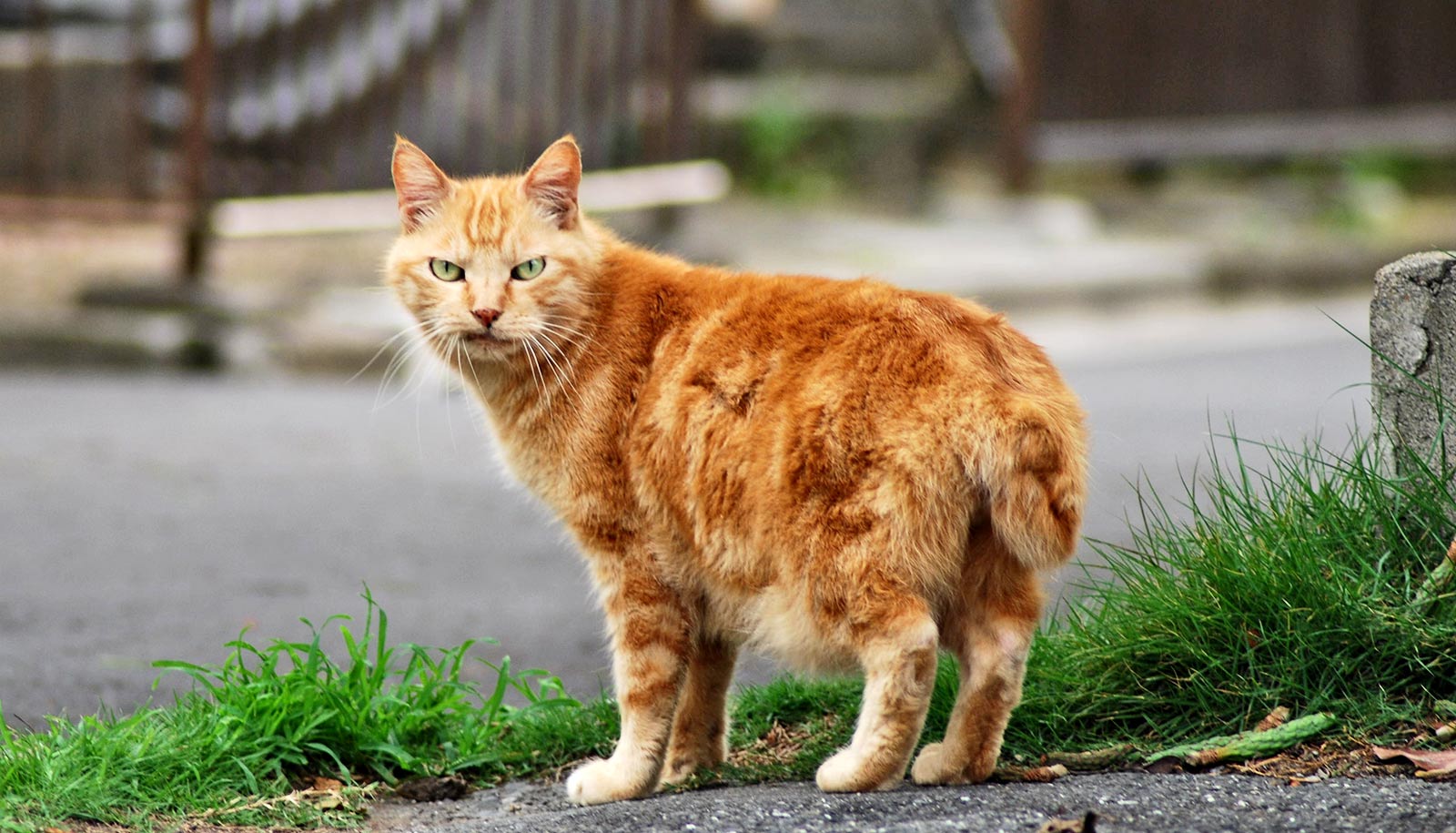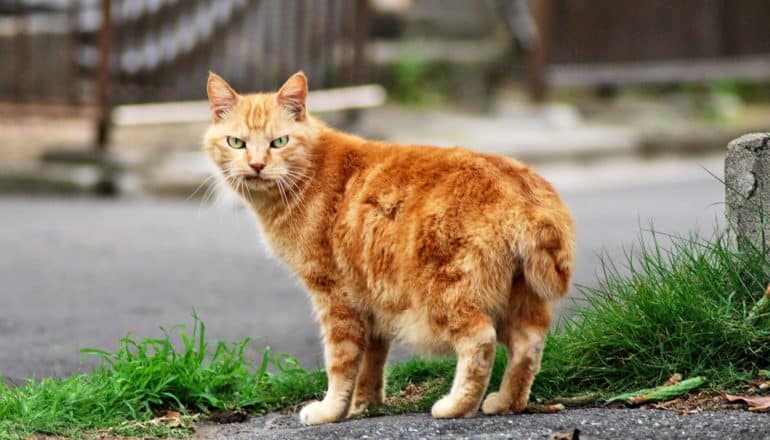
(Credit: yamamoto yousuke/Flickr )
Can ‘trap, neuter, return’ really control cats? Maybe
Trap, neuter, return programs for free-roaming cats are controversial. New research says they can reduce populations and suffering, but only at scale.

Research on trap, neuter, and return programs for free-roaming cats finds they can decrease overall numbers over time—once the sterilization rate reaches 75% of the colony.
The study also finds that preventable cat deaths can be reduced more than 30-fold at this threshold.
These TNR programs are widespread, but little long-range data existed to show that they could effectively shrink colonies over time, and even less to show that these programs prevent cat deaths. That’s because it’s hard for veterinary scientists or animal-rescue groups to count free-roaming cats, which often live just out of our sight. Wildlife scientists, on the other hand, excel at counting free-roaming populations—but wildlife people and cat people don’t always see eye to eye.
The debate over cat management tactics is often framed as an impasse between wildlife folks—who view the cats as a threat to wild birds, mammals, and reptiles—and cat people, who want to protect the cats. However, both camps have a shared goal: reducing roaming cat populations to create healthy communities for all species.
Combining the expertise of these groups allowed the researchers to make unprecedented predictions about the long-term effectiveness of TNR programs using population modeling that’s not typically applied to animal welfare studies.
Reducing suffering
Free-roaming cats can be strays, unsocialized feral cats born in the wild, pets whose owners let them outdoors, or even neighborhood cats that find their way into your yard and heart, even though they’re not exactly yours.
The worst thing communities can do is nothing, researchers say. That’s because cats have a high reproductive rate, and 75% of their kittens die before the age of 6 months. As a result, unchecked breeding results in the highest number of preventable deaths, even more than culling programs, in which cats are trapped and euthanized.
“Trap-neuter-return eliminates a huge amount of suffering,” says Julie Levy, a professor of shelter medicine at the University of Florida College of Veterinary Medicine, and an author of the study in Frontiers in Veterinary Science.
For wildlife lovers, however, cats are the interlopers, wreaking havoc on an ecosystem they don’t belong in. Trapping and euthanizing roaming cats at high volume is about as effective as high-intensity TNR, but has a major drawback, Levy explains: The public won’t play along.
“The community generally will not help if they know the cats are going to be harmed,” she says. “Cat-friendly programs like TNR gain support from residents who will pitch in sweat equity to support the process, whereas lethal programs do not gain citizen participation and rely on tax-funded municipal programs to maintain.”
A high bar for TNR programs
The population models in the study suggest that rescue and welfare groups should focus on TNR efforts that have a high impact over a short amount of time, Levy says. That can be a tough sell to groups who have traditionally divided their limited resources among feeding, sheltering, and treating strays, but could be the path to a long-term solution, Levy says.
“It’s easy to get distracted with other noble goals, but TNR programs probably need to partner with agencies more geared to vet care and adoption so they can free themselves of extraneous activities and neuter more cats,” Levy says. “Small programs don’t reduce populations and result in more preventative death.”
But with a population living in the shadows, is the 75% sterilization goal that TNR programs need to hit realistic? Levy acknowledges it’s a challenge, but points to studies in Florida, Chicago, and Massachusetts that have exceeded that target. Another limitation is the expense and expertise required for surgical sterilization. Levy is hopeful that other options in development, such as a contraceptive pill, implant, or injection, could make it cheaper and easier to help hit the 75% mark for fertility control.
The team, which wildlife biologist John Boone of Nevada’s Great Basin Bird Observatory led, came together via the not-for-profit Alliance for Contraception in Cats & Dogs and included researchers from Hunter College, the International Union for Conservation of Nature, Illinois State Museum, and the American Society for the Prevention of Cruelty to Animals.
“A lot of us on this team are deeply committed to finding ways to protect wildlife and cats,” Levy says. “We all want there to be fewer free roaming cats in the environment. How are we going to develop effective management tactics so we can make strides toward that goal? This paper is an excellent example.”
Source: University of Florida
The post Can ‘trap, neuter, return’ really control cats? Maybe appeared first on Futurity.
Share this article:
This article uses material from the Futurity article, and is licenced under a CC BY-SA 4.0 International License. Images, videos and audio are available under their respective licenses.
Related Articles:
Genes partially explain dog breed behaviors
Oct. 9, 2019 • futurityCompound in semen is sea lamprey ‘cologne’
July 9, 2019 • futurityLinks/images:
- https://www.futurity.org/cats-chose-live-people/
- https://doi.org/10.3389/fvets.2019.00238
- https://www.ncbi.nlm.nih.gov/pubmed/12523478
- https://www.ncbi.nlm.nih.gov/pubmed/29346278
- https://www.ncbi.nlm.nih.gov/pubmed/29088106
- https://www.futurity.org/contraceptive-cats-1023052/
- https://news.ufl.edu/2019/08/does-sterilizing-stray-cats-work/
- https://www.futurity.org/cats-tnr-trap-neuter-release-2136322-2/
- https://www.futurity.org


